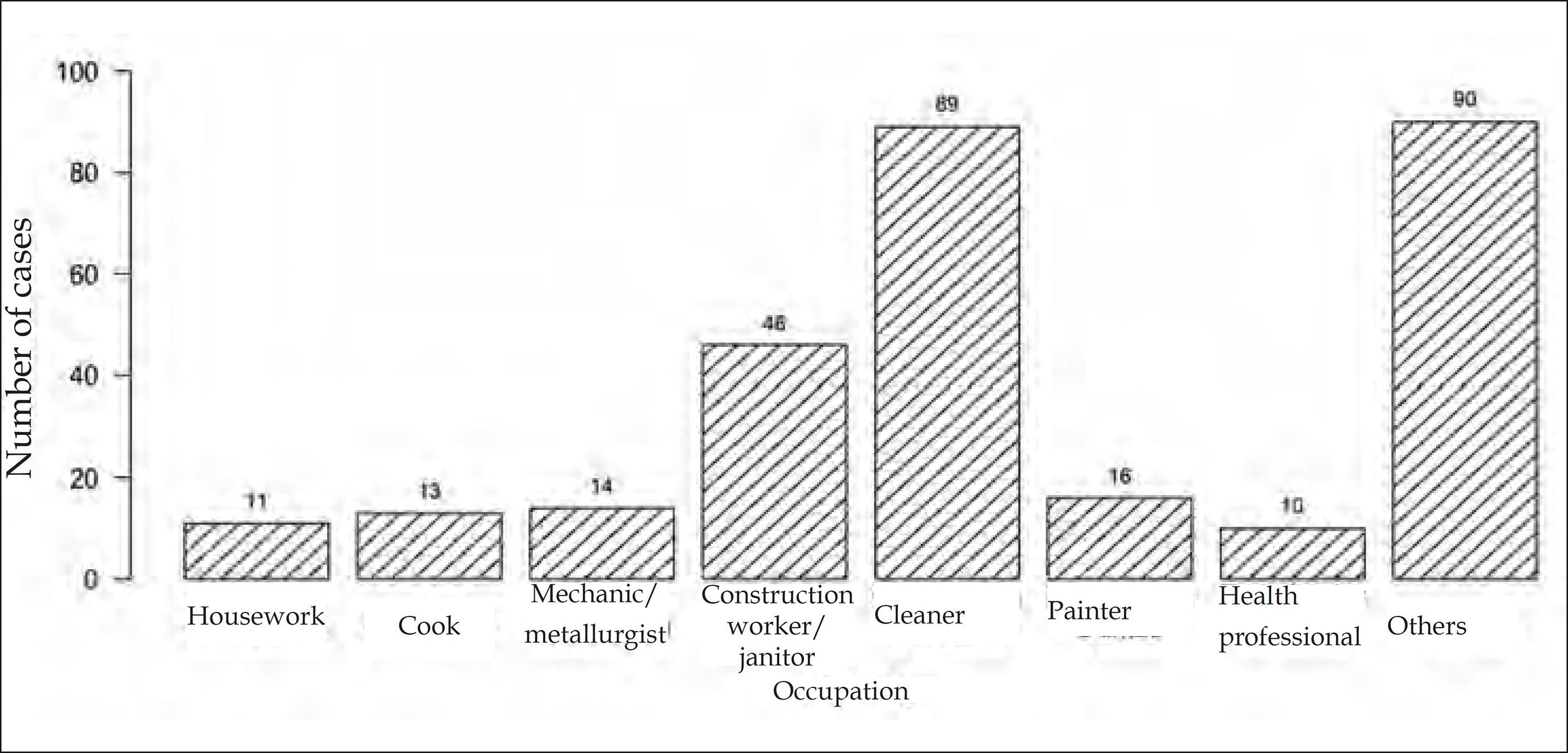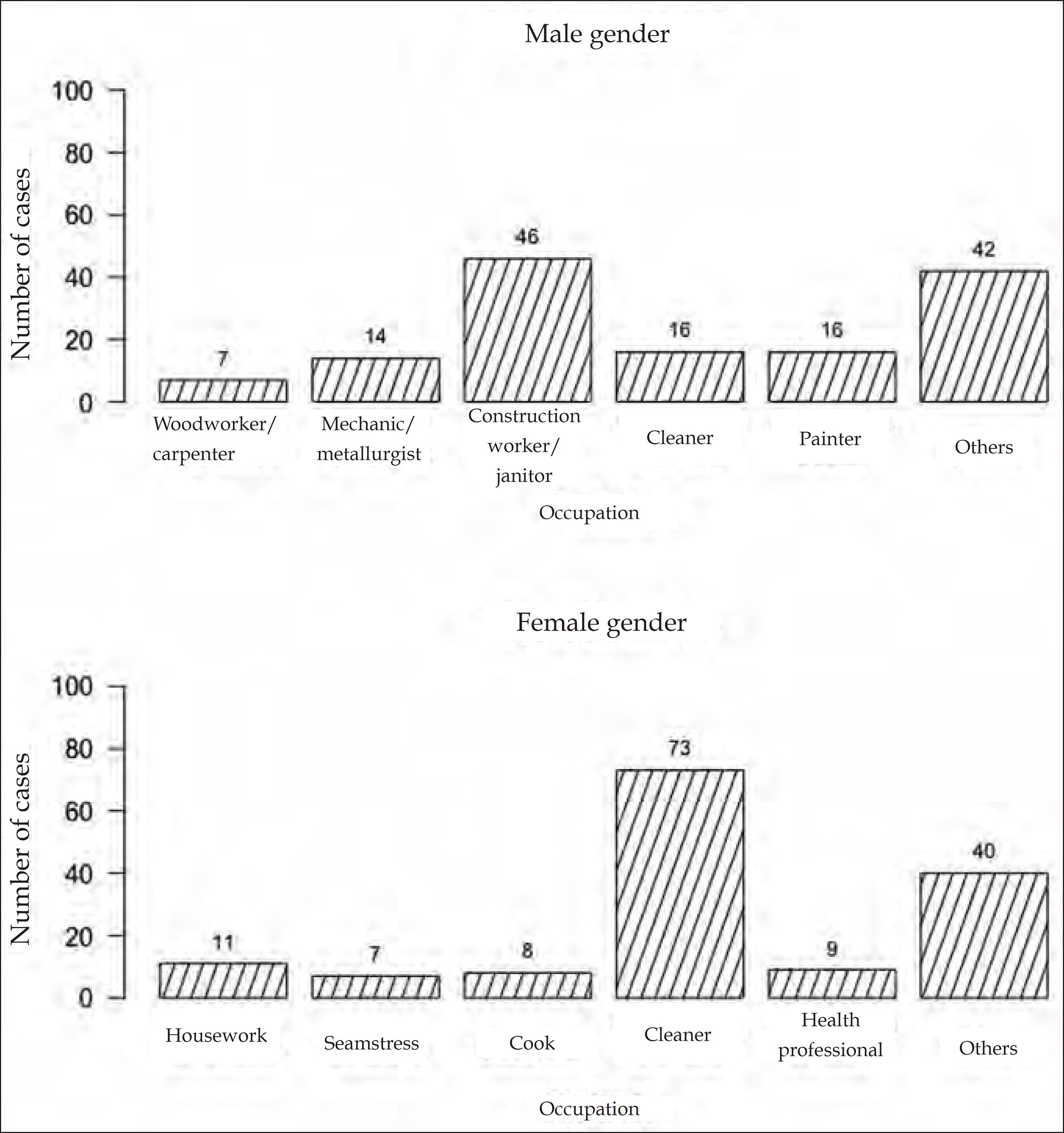Abstract:
BACKGROUND:
Occupational dermatoses are common, especially contact dermatitis. Epidemiological studies on these dermatoses are scarce in Brazil and they are necessary as part of the public policy to protect workers' health.
OBJECTIVES:
To identify sociodemographic and clinical profile of patients with occupational contact dermatitis seen between 2000 and 2014 at an occupational dermatology service.
METHODS:
It is a cross-sectional and retrospective study, based on information obtained from the service's database.
RESULTS:
Of 560 patients with conclusive patch test, 289 (46.9%) presented occupational dermatoses and 213 occupational contact dermatitis with predominance of the allergic type in relation to the irritative type (149:64 respectively). The odds of occupational dermatoses were higher among men and lower among patients aged 50 years or older and with higher level of education. Regarding the possibility of presenting occupational allergic contact dermatitis, only the gender variable was statistically significant. The professions most seen were cleaners, construction workers, painters, mechanics/metallurgists and cooks. The commonest allergens were nickel sulfate, potassium dichromate, cobalt chloride, carba-mix and formaldehyde.
STUDY LIMITATIONS:
The main limitations of this study are the fact that it was carried out in a tertiary service of occupational dermatoses and the lack of access to some allergens outside the patch test baseline series.
CONCLUSIONS:
It was possible to identify the sociodemographic and clinical profile of patients with suspected occupational contact dermatitis seen at the Service, beyond the professional groups and allergens related to a high risk of occupational contact dermatitis in this population.
Keywords:
Chemical compound exposure; Dermatitis, contact; Dermatitis, occupational; Occupational health

 Source: Developed based on the information from the database of patients seen at the service of wor k-related dermatology, 2000-2014.
Source: Developed based on the information from the database of patients seen at the service of wor k-related dermatology, 2000-2014.
 Source: Developed based on the information from the data base of patients seen at the service of work-related dermato logy, 2000-2014.
Source: Developed based on the information from the data base of patients seen at the service of work-related dermato logy, 2000-2014.
 Source: Developed based on the information from the database of patients seen at the ser vice of work-related dermatology, 2000-2014.
Source: Developed based on the information from the database of patients seen at the ser vice of work-related dermatology, 2000-2014.